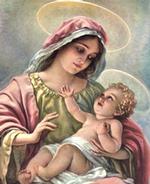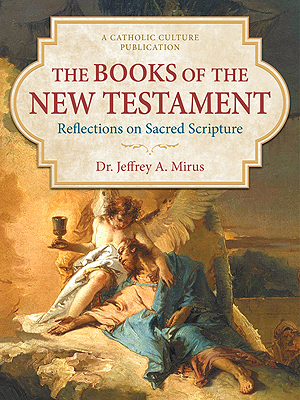Colorful Multitudes Flock to Santiago De Compostela
By special pontifical privilege dating back to the times of Pope Callistus II, any year in which the feast of St. James (July 25) falls on a Sunday is declared a "Holy Year."
This makes Santiago de Compostela in Spain the third holy city in the world, following Rome and Jerusalem. Throughout the town's history, countless multitudes of pilgrims have visited Compostela to earn the Jubilee indulgences (more than two million flocked to the Apostle's tomb in the 1965 Holy Year and four million passed through the holy door during the 1976 Holy Year).
Not only do the religious and tourist highlights of the city and its environs attract visitors, but its fine climate, atmosphere, high cultural standards, and excellent facilities make it a pleasant refuge and vacation spot.
July 24, the eve of St. James' Day, is famous for the "Fuego Del Apostol," a magnificent firework display on the Orbradoiro facade of the cathedral. Solemn and splendid liturgical ceremonies occur in the cathedral on July 25, commemorating the saint's martyrdom. The large, impressive statue of St. James as a warrior is taken from the cathedral and carried through the streets. Further colorful and awesome celebrations are held on December 30, the commemoration of the removal of the remains to Spain.
The Famous Way to Santiago
Since 950 when Bishop Gottschalk arrived at St. James' tomb, leading a party of French pilgrims through the Pyrenees, there have been endless networks of "Ways to Santiago," known as the Compostela Pilgrims' Way. They have come by sea, foot, and horse. Hospitals and inns were established to aid the pilgrims.
The Committee for the Holy Year in the Ministry of Information and Tourism has revived the complex of routes followed by the pilgrims, along which are still to be seen the vestiges of this great river of spirituality, culture, and art.
Conveniently located approximately 325 miles from the gateway city of Madrid, eight miles from Santiago's airport, this area is easily accessible by plane, automobile, or tours and is worth visiting anytime, not just during the Holy Year.
In an area known as green and Celtic Galicia in the northwest of Spain, near the Atlantic Ocean, beneath dense woods that cover forgotten vestiges of ancient civilizations, the tomb containing the mortal remains of St. James the Elder was discovered in 813. Beheaded in Palestine, his body was brought to Galicia. On the site of the tomb, Alfonso II, "the Chaste," founded a church and monastery, now called The Cathedral. It has been a shrine to St. James since the ninth century.
Under the high altar is the crypt containing the remains in a silver urn, lavishly decorated with baroque gold and silver, dominated by the statue of the patron saint of all the Spains, in a sitting position. The shrine is venerated by millions of fervent people the world over, and not just during the Holy Year.
The "Sacra" Way Of James
The town of Compostela has over 100 churches and chapels, each indeed distinctive. As you walk along these narrow streets, you gaze with wonder, meditate, and have the reverent feeling that this was one of the many roads in which James and his disciples walked and preached.
The awe-inspiring feeling will never leave you.
Every day Compostela's streets, alleys, and plazas are overrun with university and high school students. Like all students throughout the world, they congregate to discuss endless problems and subjects. They still feel St. James' presence, and honor and respect him as though he were among them, joining in the discussions. It is truly a revelation to see their reverence toward the saint and to see that their activities are centered around the great cathedral.
Highlights Of The Cathedral
The cathedral, a magnificent example of religious architecture, has acquired its present appearance, embracing a unique gamut of architecture styles, over the course of many centuries. Romanesque blends with the most fanciful baroque and delicate ogival Gothic with the elegance of plateresque. The cathedral was built between 1075 and the early years of the 12th century. The latest parts of the cathedral, including the facade, date from the 18th century. Perhaps the finest creation of the 12th century is the extremely beautiful Portico de la Gloria, outstanding for its realism and vivid characterization. The famous Puerto Santo (Holy Door), in the back of the cathedral, facing a lovely courtyard opened only during the Holy Year, is an example of the handsome Quintana facade in the 17th century.
The lateral aisles are bounded on the outside by a rosary of chapels, some Romanesque, such as the Corticela with a fine carving of the Three Wise Men on the pediment, or El Salvador, or the Kings of France. Others are in baroque or neoclassical style. Adjoining the cathedral are the sacristy and the late-Gothic cloister with many Renaissance motifs. Worth visiting are the cloister museum containing interesting archeological remains, valuable liturgical ornaments, and one of the best collections of tapestries in Spain; the Chapels of Relics; and San Fernando, where the reliquary, royal tombs, and treasures can be viewed. Several statues of St. James are most impressive, such as the warrior and a precious silver statue at the great altar.
Scene To Behold In The Cathedral
Not to be missed is truly one of the most unique sights in the cathedral and Catholicism, the Botafumeiro. It is a huge, silver plated censer, weighing approximately 54 kilos, which is swung on a thick rope from end to end of the transept, in front of the high altar. The clergy then carefully lift the censer in their arms and gently put it in its resting place.
Thousands of pilgrims — including students carrying colorful staffs laden with artificial fish, shells, and a water jug, symbolic of St. James' pilgrimages — are another memorable sight.
Popes' Quotations
Pius XII — July 24, 1940: "After the tabernacle, where Jesus is present although invisible, after Palestine, which preserves, in addition to the Holy Sepulcher, other traces of His Presence here on earth; after Rome, which has the glorious tombs of the Apostles, there is probably no other place so constantly visited over the centuries by such multitudes of pilgrims as the historic capital of Galicia, Santiago de Compostela."
Paul VI — July 25, 1965: "In second place, the Way to Santiago has the special character of a great forger of unity. From the Pyrenees and even farther, the Way to Compostela has been a cord that, century after century, bound together within a single religious ideal the most diverse peoples."
James Michener, the famous author, called Santiago "the finest journey in Spain and one of the two or three best in the world."
This item 6083 digitally provided courtesy of CatholicCulture.org






